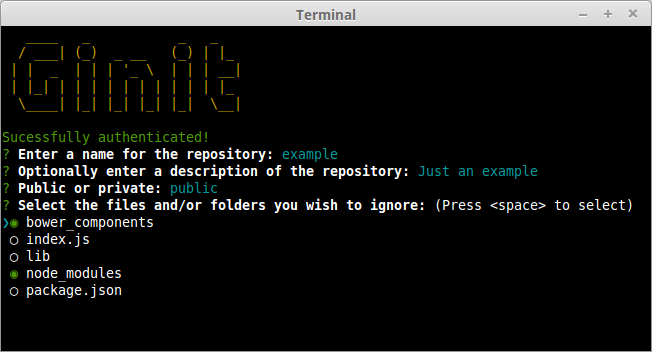
- #GIT ADD REMOTE TO REMOTE REPOSITORY HOW TO#
- #GIT ADD REMOTE TO REMOTE REPOSITORY MANUAL#
- #GIT ADD REMOTE TO REMOTE REPOSITORY CODE#
If the remote git repository only supports HTTP protocol the following git repository URL can be used too. $ git remote add origin git:///ismail/project.git

In the following example, we add a new remote repository “ git:///ismail/project.git“. But the most popular way is specifying the remote git repository with the git protocol. The “git remote add” is used to add a new remote repository in different ways. The REPO_NAME is the repository name for the local git.The “git remote add” command has the following syntax.
#GIT ADD REMOTE TO REMOTE REPOSITORY HOW TO#
In the tutorial, we examine how to add a new remote repository to the existing local git repository. In an existing git project, the new remote repository can be added with the git remote add command by specifying the remote repository URL, repository name, etc.
#GIT ADD REMOTE TO REMOTE REPOSITORY CODE#
If you have already created https remotes and want to switch them to use ssh, the following command can be used.Git is a distributed source code versioning system where repositories are used as central points and developers download and push changes to their locals. Rename a remote $ git remote rename heroku staging $ git remote add staging git remote add heroku useful commands List your git remotes $ git remote -v $ heroku git:remote -a staging-app -r stagingĪs points out, all of the examples above use the https protocol for connecting to the remotes, but it is also possible to connect via ssh. $ heroku git:remote -a staging-appĮdit: Thanks to for pointing out you can supply a remote name to this command with the -r flag.

If you use the atomic option when you push to a remote repository, either every reference will be updated or none at all.
git push dry-runIf you would like to use a different name for your remote, see the "Rename a remote" section below. This option will execute the git push command and show you the results, but it won’t actually send any updates to the remote repository. Enter the following commands: Shell git init git add git commit -a -m Initial commit git remote add origin git. However, it looks like this will always use the default remote name heroku for the remote. If we want to add a new remote, we will run the command git remote add on the terminal, in which the directory of our repository is stored, and this command will add a new branch to our repository. 1 Answer git remote add origin :User/UserRepo.git git remote set-url origin :User/UserRepo.git git push -u origin master. $ git remote add heroku Īs points out, you can alternatively use a Heroku CLI command to add your remote. The command git remote generates, watches, and removes connections to further repositories. $ git push staging staging:master -fĪdd a remote for your Production app and deployuīy convention, the remote name "heroku" is typically used for the production application. Here will see how will create Remote repository and add a local folder to remote repo. Before add the project to the GIT, we need to create a GIT repository.
git remote rename < old - name > < new - name >. Now will see, how to add remote git repository in our local project directory For Example, you have been working on some project long term, but still you didn’t add to git.
In Git, every developer working in the project gets their respective copy of the. Remove the connection to the remote repository called name. In this tutorial we will learn about Git remote to connect to repositories. After adding a remote, you’ll be able to use name as a convenient shortcut for url in other Git commands. If you are very sure you want to proceed, add the -force ( -f) flag. Create a new connection to a remote repository. In some cases, your local branch may be missing some commits that were already deployed to Heroku, resulting in an error. If you want to deploy a different branch, you can use the syntax local_branch:destination_branch seen below (in this example, we push the local staging branch to the master branch on heroku. Note that on Heroku, you must always use master as the destination branch on the remote. In general, when creating a new project, you pull existing code from remote repositories, then create a local repository to store your changes so they dont.

Adding a new remote Add a remote for your Staging app and deploy
#GIT ADD REMOTE TO REMOTE REPOSITORY MANUAL#
However, if you are working on an existing app and want to add git remotes to enable manual deploys, the following commands may be useful. Generally, you will add a git remote for your Heroku app during the Heroku app creation process, i.e.


 0 kommentar(er)
0 kommentar(er)
